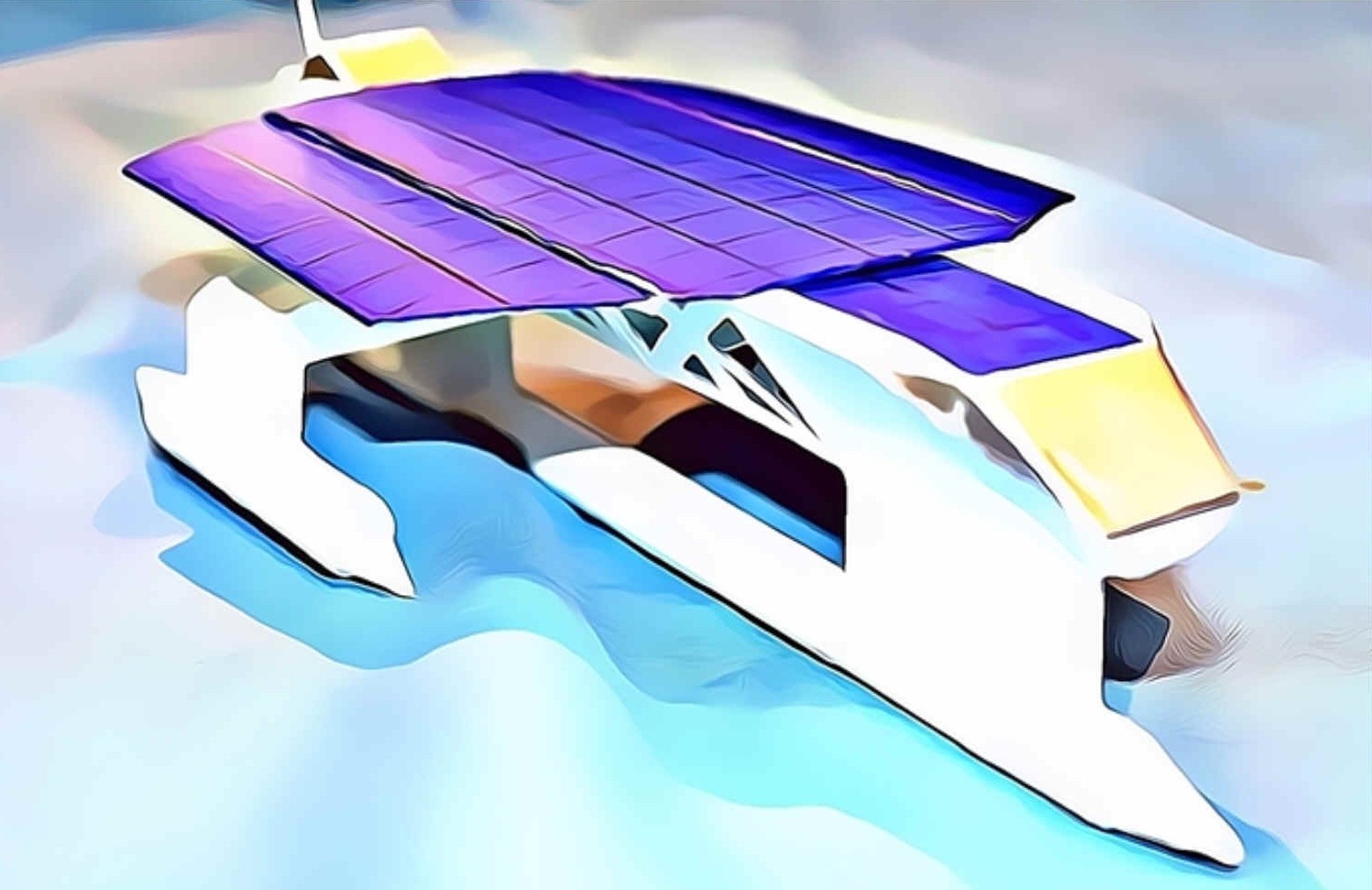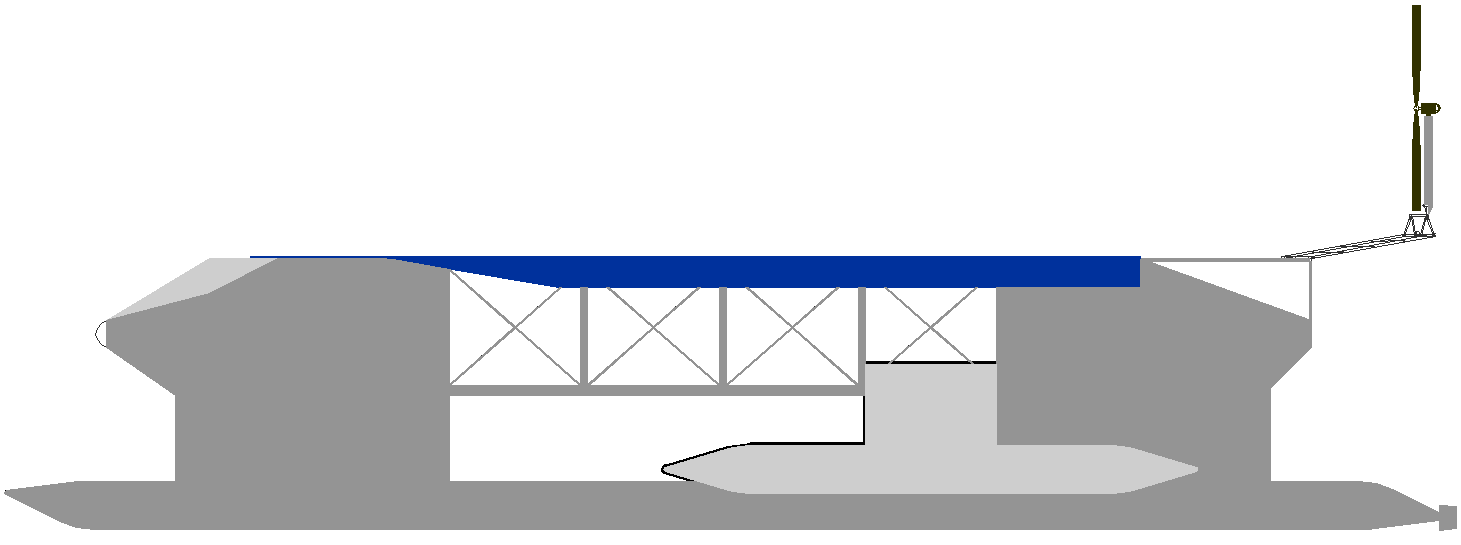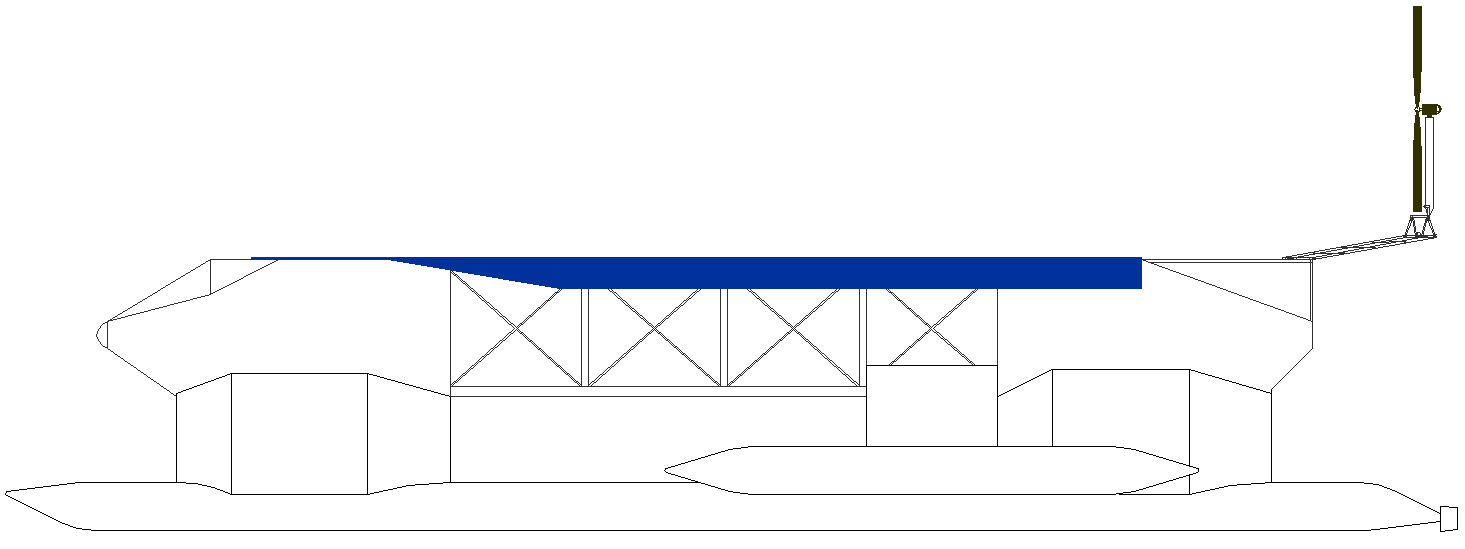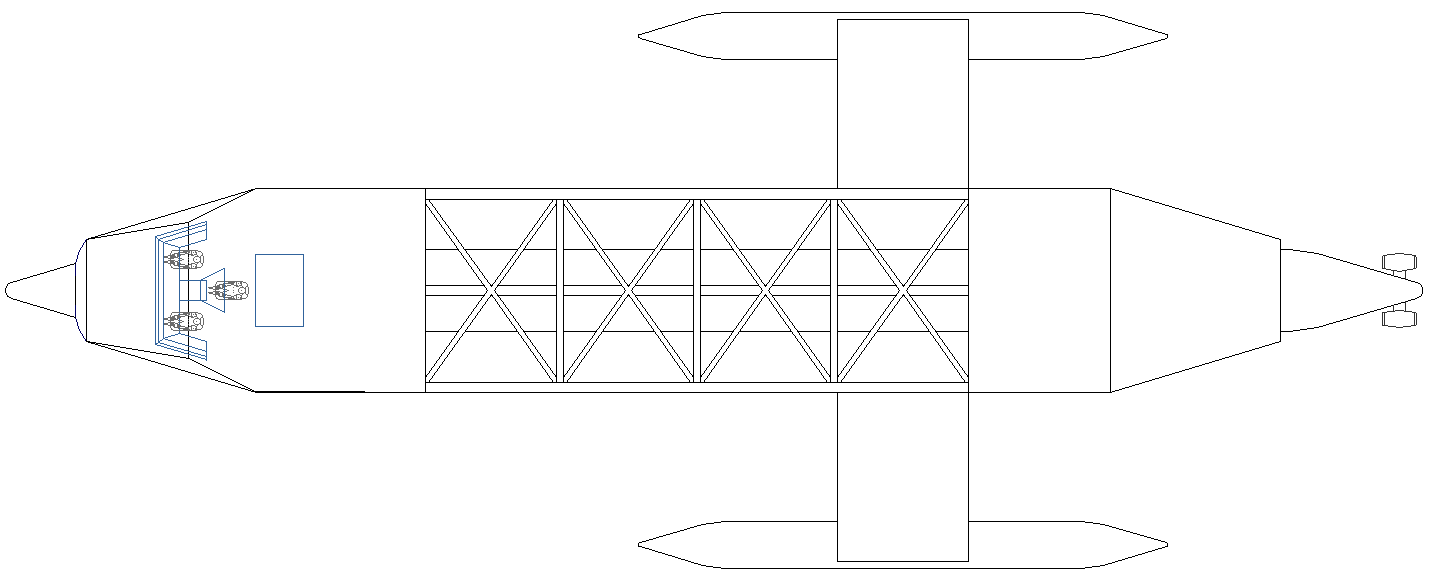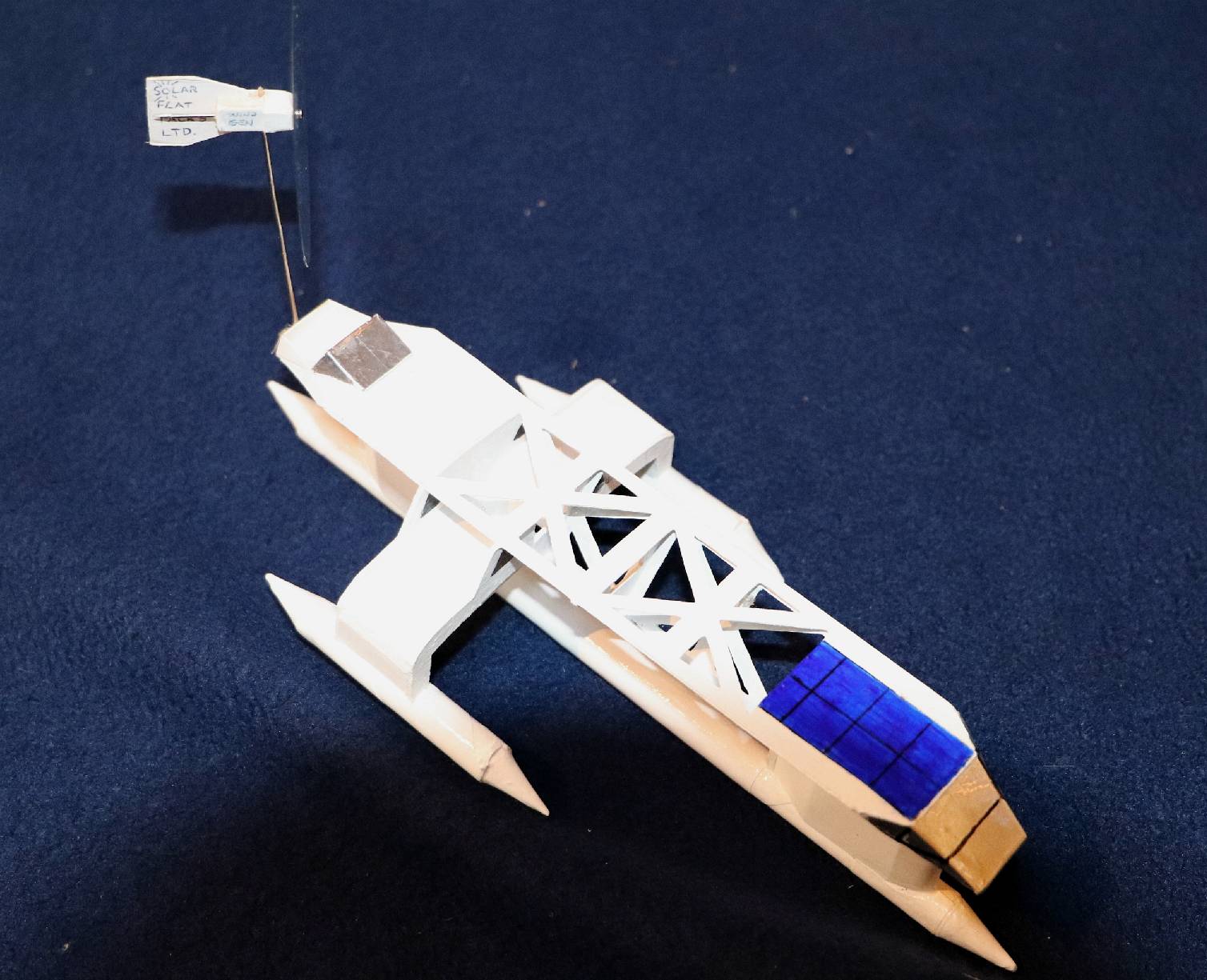|
SWATH: QES SWANN
Please use our A-Z INDEX to navigate this site or return HOME
|
SWATH - It all started with this tiny model, made of paper and cardboard. It floated perfectly as a submerged central hull, with outriggers just skimming the water surface, to provide stability.
In the years that followed a swing wing system and wind turbine boom were developed on a land vehicle. The idea is to combine a rotary sail generator with solar panels to allow faster blue water transits, allied to advanced computer navigation for green lanes.
The 'Elizabeth Swann' is an in-progress design study, under development, in the hope of defining a technical/cost compromise that will allow the vessel to beat the present water speed record for solar powered vessels. For this we need minimum frontal areas in and out of the water, and superior hydro and aerodynamics.
There are 2 possible designs we are evaluating cost and complexity wise:
1. A single central submerged hull stabilized by outriggers - or Small Waterplane Area Triple Hull (SWATH).
2. A single central wave piercing hull stabilized by outriggers as a trimaran.
While the SWATH design theoretically offers the best rough weather hull performance, and lower wave drag, where the main hull runs like a submarine - below the surface of the water - we will be pursuing the surface, wave piercing design, unless our funding partners wish otherwise.
The reason for this is purely to do with cost, and reducing design complexity.
The Elizabeth Swann is seen here with the thinner central hull, that runs just under the waves (Small Waterplane Area Triple Hull - SWATH). This option is more expensive to build because of the computer trim controls, with less load carrying capability and reserve buoyancy. The front cabin is also a helm. The helm at the rear is an open cockpit for fine weather sailing.
Same view as above, only as a line drawing, with just the solar wings blocked in in blue. The solar panels are supported on a lightweight space-frame, so keeping the mass of the vessel down.
The current record holder, 'MS Tūranor Planet Solar' was a heavy catamaran weighing in at 85 tonnes. She had four motors, two for cruising (7.5 knots) and 2 x 60kW units to give a top speed of 14 knots (26 km/h; 16 mph). PlanetSolar has a 31 meter hull, 35 meters with the rear solar flap extended. Her Beam is 15 m (23 m with wings extended) The side wings on PlanetSolar were pulled out on rollers manually, using sailing winches.
HULL & SUPERSTRUCTURE - The trimaran design in plan view without solar panels or wings. The hull can be built as 12 sub-assemblies. Such that the alloy fabrications can be outsourced and assembled at any suitable site for launch. The largest sub-assembly would be the central triangulated spaceframe @ 16 meters. Fore and aft cabins are 10 meters long. All suitable for road haulage.
FAITHFUL REPLICA - You can see from the 1:200 model, that the CAD version of the proposed design closely resembles the original concept.
Both of the proposed hull designs share the same:
a) Ultra light superstructure purposed designed to harvest energy from nature via b) and c) below,
b) Solar wings that track the sun and fold for storms, in concert with
c) Turbine generator on a mast that tracks wind conditions and furls for storms.
|
|
Please use our A-Z INDEX to navigate this site or return HOME
This website is Copyright © 2021 Jameson Hunter Ltd
|
